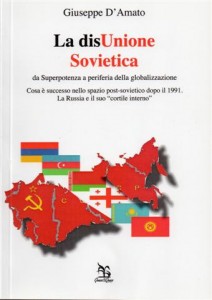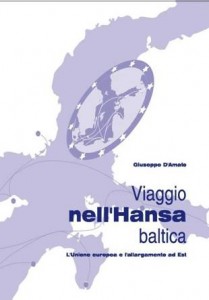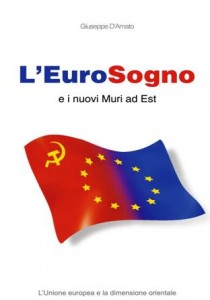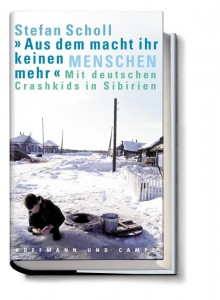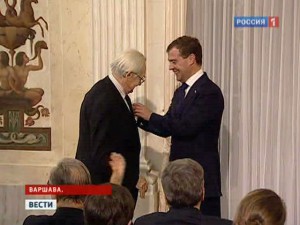Poland and Baltic States
Российско-польская перезагрузка в опасности.
11 Apr 2011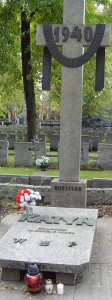
EuropaRussia copyright
«Год назад внезапная гибель под Смоленском почти сотни польских граждан на время объединила две страны…. В этот уик-энд траурные мероприятия с участием Дмитрия Медведева и его польского коллеги Бронислава Коморовского были омрачены целой серией скандалов… Впечатление все это производит тягостное, если не сказать больше. У всех нормальных людей всегда возникает отвращение, когда политики пытаются набрать очки, спекулируя на масштабных человеческих трагедиях. Но бывают ситуации, когда политические игрища на костях — вещь абсолютно неизбежная. Смоленская трагедия — одна из них… Искреннее горе, голый циничный политический расчет — для Ярослава Качиньского эти две мотивации слились в одну. Еще до смоленской трагедии партия братьев Качиньских активно использовала в политической борьбе “теорию заговора”. Поляков фактически призывали голосовать не умом, а сердцем: типа страна по-прежнему окружена кольцом врагов. И спасти вас от них можем только мы, Качиньские…
Всегда отличавшийся прагматизмом премьер Дональд Туск не хочет вести политическую борьбу… Туск должен отбивать атаки Качиньского… Российско-польская перезагрузка — одно из главных внешнеполитических достижений польского премьера. Он наверняка хочет эту перезагрузку сохранить. Но при этом Туск опять же не может чересчур активно солидаризироваться с Москвой в оценке причин смоленской авиакатастрофы. Это обязательно выльется в лозунг “Туск — марионетка Кремля”…
Линия российской власти тоже понятна. Она хочет продолжения перезагрузки с Варшавой и искренне желает Туску победы. Но Москва не готова играть роль козла отпущения в польских внутриполитических играх… Какой-то процент поляков всегда будет убежден, что Леха Качиньского погубили “Путин и его агент Туск”….
Вопрос в другом: имеет ли это параноидальное меньшинство стать в Польше большинством? Ответ мы узнаем, когда через несколько месяцев в Речи Посполитой пройдут парламентские выборы. Партия Ярослава Качиньского считается сегодня в выборной гонке отстающей. Хочется верить, что она таковой и останется. Иначе российско-польские отношения ждут новые тяжелые времена».
Статья Михаил Ростовский Московский Комсомолец № 25614 от 11 апреля 2011 г. Mikhail Rostovsky Moskovskij Komsomolets
Fittissima l’agenda del vertice del gruppo di Weimar, il primo dal 2006 dopo il congelamento voluto da Lech Kaczynski. Nello splendido palazzo di Wilanow il presidente polacco Komorowski, il collega francese Sarkozy e la cancelliera tedesca Merkel si sono soprattutto confrontati sulle tematiche continentali.
“Poiché 17 Paesi hanno l’euro – ha spiegato il capo dell’Eliseo – è normale che i loro ministri delle Finanze si incontrino”. Attenzione a non creare un’Europa a due velocità, è l’invito di Varsavia.
La Polonia, ancora fuori dalla moneta unica, gestirà dal primo luglio 2011 come presidente di turno dell’Unione la complessa trattativa sul nuovo budget continentale nel periodo 2014-2021. “Stiamo ancora aspettando le proposte della Commissione”, ha annunciato Komorowski, il cui Paese ha ottenuto da Bruxelles oltre 67 miliardi di euro dal precedente bilancio. “Non abbiamo parlato dei dettagli – ha ammesso la Merkel -, ma speriamo che il negoziato sia buono”. Sarkozy ha quindi ribadito che i deficit dei singoli Stati vanno ridotti.
Il gruppo di Weimar, creato nel 1991 per promuovere la cooperazione tra i tre Paesi ed aiutare la Polonia ad integrarsi meglio in Europa dopo il comunismo, si è augurato rapporti più forti con la Russia.
“As far as I know, this conflict has been ended,” Yanukovych told reporters during a visit to Poland, Ukraine’s co-host for the 2012 European football championships.
Yanukovych said he stepped in personally to settle wrangling over alleged government interference in Ukraine’s football association, which is banned under the game’s rules and can lead to nations being barred from international competition.
Article – AFP – February 3rd, 2011
Poland – Lithuania, the “W” dispute.
14 Jan 2011“Poland and Lithuania are deeply divided over the letter w. Used a lot in Polish, the letter doesn’t exist in Lithuanian. That and other spelling differences are irritating Lithuania’s Polish minority, who demand the right to spell their names in Polish in passports and other documents…in recent months other disagreements have helped escalate it to a full-blown diplomatic standoff….Similar disputes are happening elsewhere in Eastern Europe. A Slovak language law limiting the use of Hungarian and other minority languages went into effect Sept. 1, 2009, stoking political tensions between Slovakia and Hungary and garnering criticism from EU authorities.”
Article – AP Lithuania – January 14th, 2011
Economic Outlook – BALTIC STATES, December 2010.
17 Dec 2010Latest Data – December 2010.
The economic crisis in the Baltic states has begun to ease. “Growth prospects will depend on how well these countries can shift to a more export-oriented model,” Mark Allen, senior IMF resident representative for Central and Eastern Europe.
1. Estonia
In 2009 GDP -13,9%. According to Statistics Estonia, by flash estimates, the gross domestic product (GDP) of Estonia increased by 4.7% in the 3rd quarter of 2010 compared to the same quarter of the previous year. Q3 2010: 4.7%; Q2 2010: 3.1%; Q1 2010: -2.0%. This change was influenced by the growth of value added in the manufacturing activity created owing to a vigorous growth of exports.
The European Commission raised in its fresh autumn forecast Estonia’s economic growth forecast to 2.4% for the year 2010 and 4.4% for 2011. In 2012 the economy should grow 3.5%.
The Commission forecasts unemployment at 17.5% this year, 15.1% next year and 13.6% in 2012. Inflation should be 2.7% this year, 3.6% next year and 2.3% in 2012
EURO – “We are at sea in a small boat tied to an ocean liner. In a storm or otherwise, we’d feel better being on board,” is how Estonian finance minister Jürgen Ligi describes his country’s determination to join the euro zone from January 1st, writes Bloomberg.
Estonia’s budget deficit may be about 1.3 percent of gross domestic product this year, Finance ministry said.
2. Latvia
In 2009 the GDP shrank 18%, the worst fall in the European Union. A 7.5 billion euro bailout was led by the International Monetary Fund and the European Commission in 2008. Latvia expects a 0.4% fall in the economy in 2010. In 2011 the growth is expected to be around 3.3%. Government debt will peak at about 50.4 percent of GDP, according to the IMF.
The targeted deficit cut was 280 million lats ($541 million) in the 2011 budget so the expected deficit reduction measures would be worth 2 percent of GDP. Latvia had already taken measures worth 1 billion lats in 2009 and 2010 to cap the deficit. Some of the austerity measures included public sector job losses and wage cuts by up to 50 percent as well as higher personal income tax rates and and a rise in value added tax. In 2011 the targeted budget deficit will be 6% of gross domestic product.
3. Lithuania
In 2009 Lithuania’s economy shrank 14,7%. In 2010 GDP Q3 2010: +0.6%, Q2 2010: +1.1%, Q1 2010: -2.0%. The government forecasts the economy will expand 1.6% in 2010. The 2011 budget was approved by the Lithuanian Parliament on December 9th. The targeted budget deficit will be 5.8% of GDP. Unemployment reached 17.8% in 2010.
Economic Outlook – POLAND, December 2010.
17 Dec 2010LATEST DATA – December 2010.
GDP in 2009 + 1.7%. Poland was the only European Union country to have avoided recession. In 2010 the growth will be of 3.5% – Central Statistical Office (GUS).
The main driving force behind the economy in the second quarter of 2010 was domestic demand, according to the the National Bank of Poland (NBP). The Economy Ministry expects that economic growth will continue to stimulate activity in the industrial and construction sectors. The data shows that the Polish economy is growing faster than the economies of other EU countries except Slovakia (4.1%). The EU Commission’s view is that the Polish economy is driven by manufacturing and exports. The World Bank has recently raised its forecast of Polish GDP to 4.1% in 2011.
Poland’s image has improved as a result of the global financial crisis. The total value of new foreign direct investment in the first half of 2010 exceeded 5 billion euros and was 75% higher than a year earlier, according to NBP data. In the first half of 2010, the Polish Information and Foreign Investment Agency (PAIiIZ) successfully completed negotiations with foreign investors on 29 new investment projects.
Big privatization projects (2010 – 2013)
Government’s financial plan foresees zl.55 billion (13,5 billion euros) to be made. From the first IPOs the sum got is zl.25 billion.
Wikileaks. NATO, the Baltics, and Russia.
7 Dec 2010The main task of all military organizations is to be prepared for hostilities or to create the conditions to get the peace showing their strength. During the Cold War the “balance of terror” guaranteed five decades of stability to the world.
WikiLeaks cables has revealed secret NATO plans to defend Baltics from Moscow. The decision to draft them was taken earlier this year at request of the United States and Germany at the Northern Atlantic Alliance headquarters. The White House also offered to beef up Polish security against Russia by deploying naval and air forces to the region.
In those months Washington and Moscow were toughly negotiating the new START agreement and President Barack Obama was promoting a new approach to the former foes. The 21st century challenges need new solutions and an agreement among the most developed countries is desirable. Negotiations with the Kremlin were successful at last, and Russia was later invited to join a section of the western security system at Lisbon’s summit in November.
It would have been surprising whether the NATO had not prepared plans to protect its allies in Eastern Europe. In the cables it is written that this planning is an “internal process designed to make the Alliance as prepared as possible for future contingencies” and “it is not ‘aimed’ at any other country.” Relationships with Russia began to be strained after Saint Petersburg’s G8 summit in 2006. A cyber-attack on Estonia in 2007 was believed to have originated in Russia, and the war broke out in Georgia a year later. Russia’s foreign ministry said it was “bewildered” by revelations edited by the British newspaper The Guardian, but this kind of reaction is part of the game.
Вайде российский орден Дружбы.
6 Dec 2010Польский кинорежиссёр Анджей Вайда получил орден Дружбы из рук президента России Дмитрия Медведева. Глава российского государства назвал Анджея Вайду великим кинорежиссёром, который внёс значительный вклад не только в польский, но и в мировой кинематограф. Сын расстрелянного НКВД польского офицера, Вайда рассказал миру о трагедии в Катыни.
Вести Россия 1
ВИДЕО
E’ la fine definitiva di una delle più terribili bugie della Seconda guerra mondiale. La Russia si libera del peso di un’infamia spaventosa. La “tragedia” di Katyn, dove nella primavera del 1940 furono passati per le armi circa 22mila polacchi, fu opera dell’Unione Sovietica. “Tutti i materiali, per anni rimasti negli archivi – si legge in un documento ufficiale approvato dalla Duma, la Camera bassa del Parlamento federale, – testimoniano che il massacro è stato compiuto da Stalin e da altri dirigenti sovietici”.
Per decenni l’Urss addossò la responsabilità dell’eccidio ai nazisti. I carnefici uccisero le proprie vittime con colpi di pistola di fabbricazione tedesca nel cranio. Le prime parziali ammissioni, che la verità “ufficiale” non era quella, giunsero negli ultimi anni della perestrojka con Gorbaciov. Fu, però, Boris Eltsin, che trasmise parte dei documenti d’archivio a Varsavia, a porgere le scuse del suo Paese, anch’esso uscito prostrato dalla repressione comunista. Katyn, purtroppo, era soltanto una tragica goccia nel mare di sangue dei popoli sovietici, provocato dallo stalinismo.
Dopo il Duemila i rapporti russo-polacchi sono diventati sempre più tesi. La ragione primaria del contendere era di carattere storico. Troppi i buchi neri nelle relazioni fra i due popoli slavi, avversari o nemici nel corso dei secolo. Katyn, in particolare, continuava a pesare come un macigno.
All’inizio della primavera scorsa Mosca ha finalmente scelto la strada della piena collaborazione con Varsavia. L’obiettivo era quello di estirpare, una volta per tutte, una delle più dolorose spine nel fianco della propria politica estera. I polacchi, ad esempio, avevano accordato la propria disponibilità agli Stati Uniti per la dislocazione di siti del cosiddetto “Scudo spaziale” sul proprio territorio in funzione anti-russa. Varsavia creava problemi al processo di avvicinamento di Mosca all’Unione europea.
La sciagura di Smolensk ha ulteriormente accelerato gli eventi. Le immagini televisive di Putin e Medvedev con le lacrime agli occhi, abbracciati con i superstiti della dirigenza polacca, davanti ai resti dell’aereo del presidente Kaczynski hanno aiutato a sfondare definitivamente il muro della reciproca diffidenza. Mosca ha accolto in maggio sulla Piazza Rossa un drappello di ufficiali polacchi che hanno sfilato, insieme ai militari della Nato, in ricordo della vittoria nella Seconda guerra mondiale. Un onore del genere era impensabile soltanto nell’estate del 2008.
Quello della Duma – ha commentato il premier polacco Donald Tusk – “è un gesto politico importante”. I due Paesi hanno ormai compreso che è venuto il tempo di voltare pagina e di essere stati entrambi vittime del totalitarismo del XX secolo.
In Ricerca scrivi “Katyn” per altri articoli.
The figure towering over the town of Swiebodzin is 33 meters high – with a three meter golden crown and 16 meter high mound on which the statue stands, the total height is 52 meters, making it higher than the famous Christ the Redeemer statue in Rio de Janeiro, which is 38 meters tall.
The entire construction weighs about 440 tons.
Thousands of believers attended the unveiling and consecration of the white plaster and fiberglass figure, which is the brain child of local priest Sylwester Zawadzki.
“It’s fantastic. That’s the word which perhaps describes best what I can see here,” said an admiring woman at the ceremony on Sunday.
But the imposing figure has divided Poles. Critics say it is too big, bordering on megalomania and that the money could have been better spent.
The authorities in Swiebodzin, a town with a population of 22,000, hope that the majestic figure of Jesus Christ will attract pilgrims and tourists, bringing IN money and enlivening the local market. The figure can be seen by motorists on the Warsaw-Berlin motorway.
Source: PAP
ARTICLE – AFP
Welcome
We are a group of long experienced European journalists and intellectuals interested in international politics and culture. We would like to exchange our opinion on new Europe and Russia.
Categories
- Breaking News (11)
- CIS (129)
- Climate (2)
- Energy&Economy (115)
- EU Eastern Dimension (85)
- Euro 2012 – Sochi 2014 – World Cup 2018, Sport (43)
- Euro-Integration (135)
- History Culture (198)
- International Policy (261)
- Military (74)
- Interviews (18)
- Italy – Italia – Suisse (47)
- Odd Enough (10)
- Poland and Baltic States (126)
- Religion (31)
- Russia (421)
- Survey (4)
- Turning points (4)
- Ukraine (176)
- Российские страницы (113)
Archives
- November 2020
- October 2020
- September 2020
- August 2020
- July 2020
- May 2020
- April 2020
- March 2020
- January 2020
- December 2019
- November 2019
- October 2019
- September 2019
- August 2019
- July 2019
- June 2019
- May 2019
- April 2019
- March 2019
- February 2019
- December 2018
- November 2018
- October 2018
- September 2018
- August 2018
- July 2018
- June 2018
- May 2018
- April 2018
- March 2018
- February 2018
- January 2018
- December 2017
- November 2017
- October 2017
- September 2017
- August 2017
- July 2017
- May 2017
- March 2017
- January 2017
- December 2016
- November 2016
- October 2016
- September 2016
- July 2016
- June 2016
- May 2016
- April 2016
- February 2016
- January 2016
- November 2015
- October 2015
- September 2015
- June 2015
- April 2015
- March 2015
- February 2015
- January 2015
- December 2014
- November 2014
- October 2014
- September 2014
- August 2014
- July 2014
- June 2014
- May 2014
- April 2014
- March 2014
- February 2014
- January 2014
- December 2013
- November 2013
- October 2013
- September 2013
- August 2013
- July 2013
- June 2013
- May 2013
- April 2013
- March 2013
- February 2013
- January 2013
- December 2012
- November 2012
- October 2012
- September 2012
- August 2012
- July 2012
- June 2012
- May 2012
- April 2012
- March 2012
- February 2012
- January 2012
- December 2011
- November 2011
- October 2011
- September 2011
- August 2011
- July 2011
- June 2011
- May 2011
- April 2011
- March 2011
- February 2011
- January 2011
- December 2010
- November 2010
- October 2010
- September 2010
- August 2010
- July 2010
- June 2010
- May 2010
- April 2010
- March 2010
- February 2010
- January 2010
- December 2009
- November 2009
- October 2009
- September 2009
- August 2009
Our books
